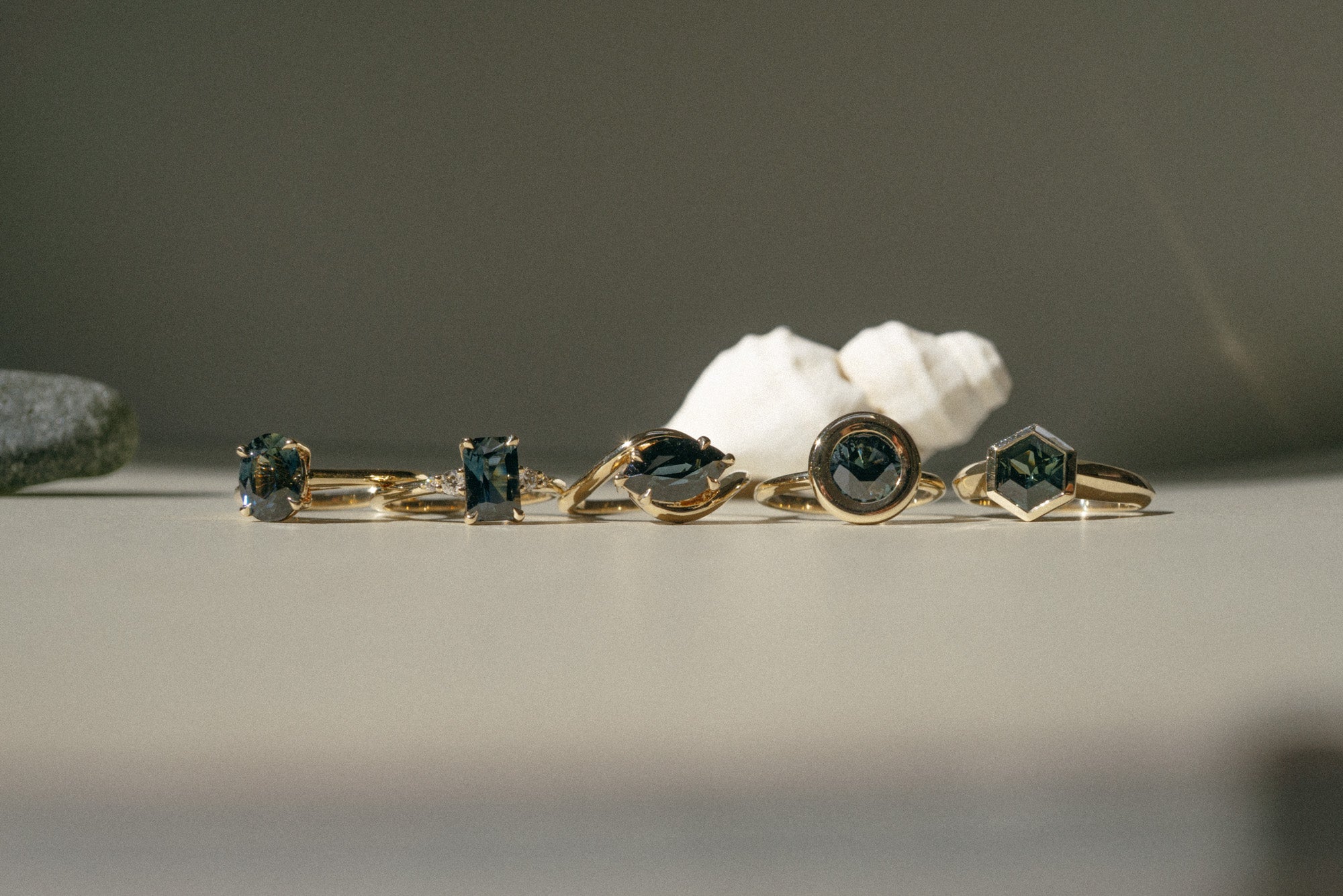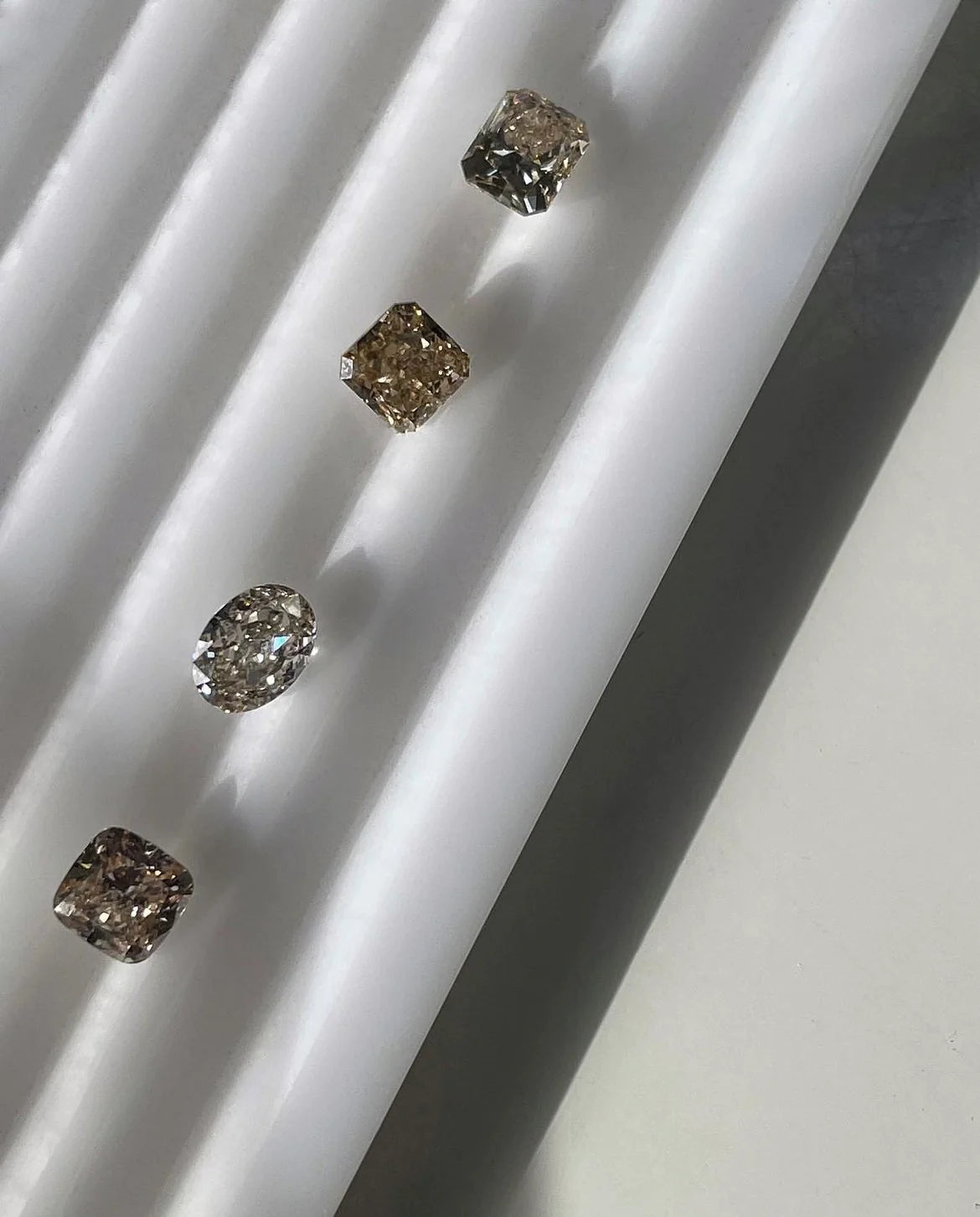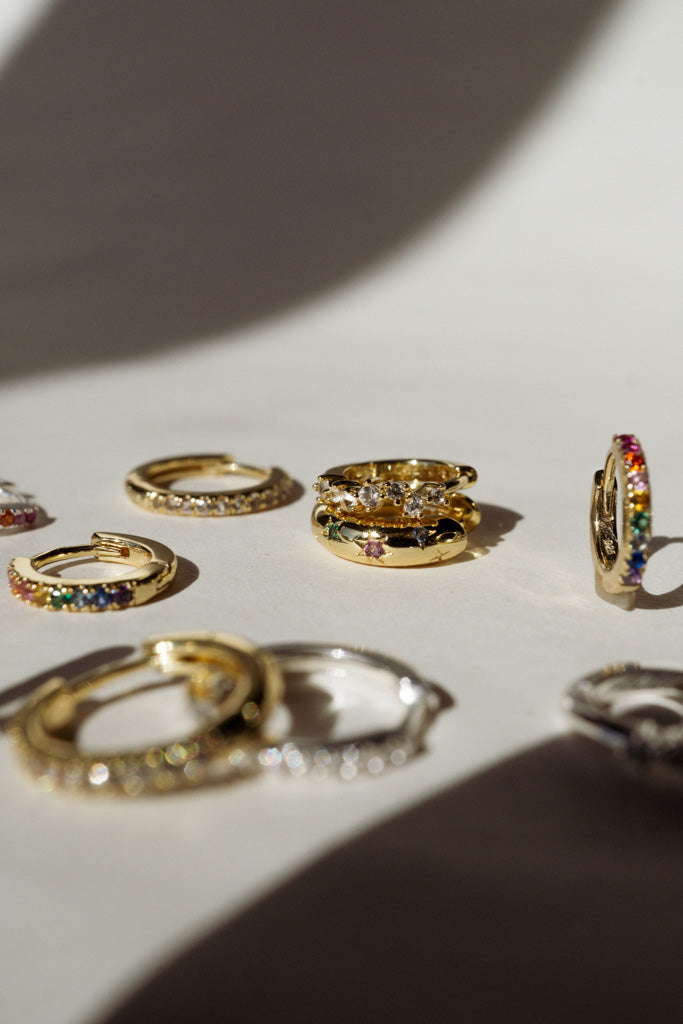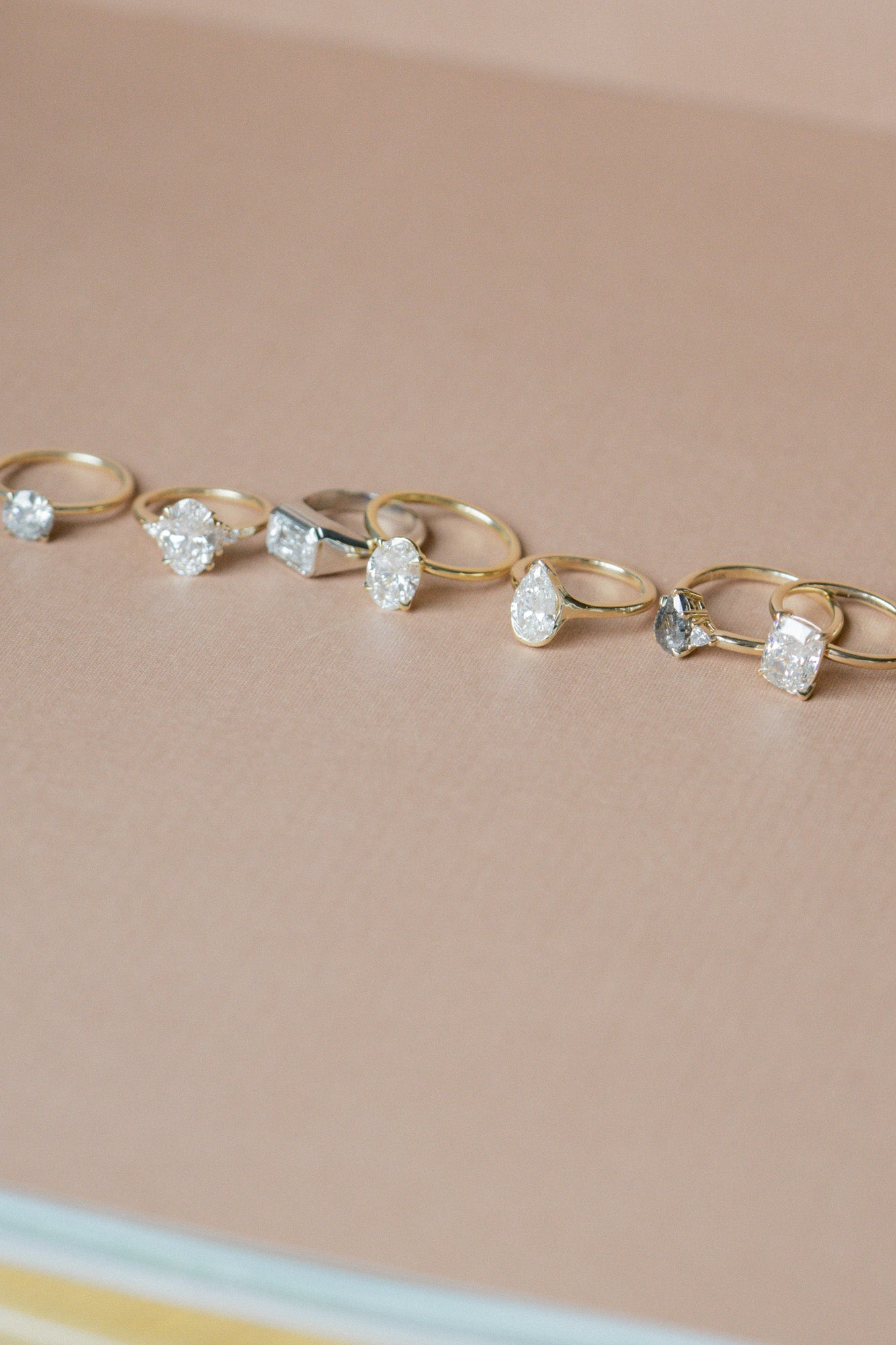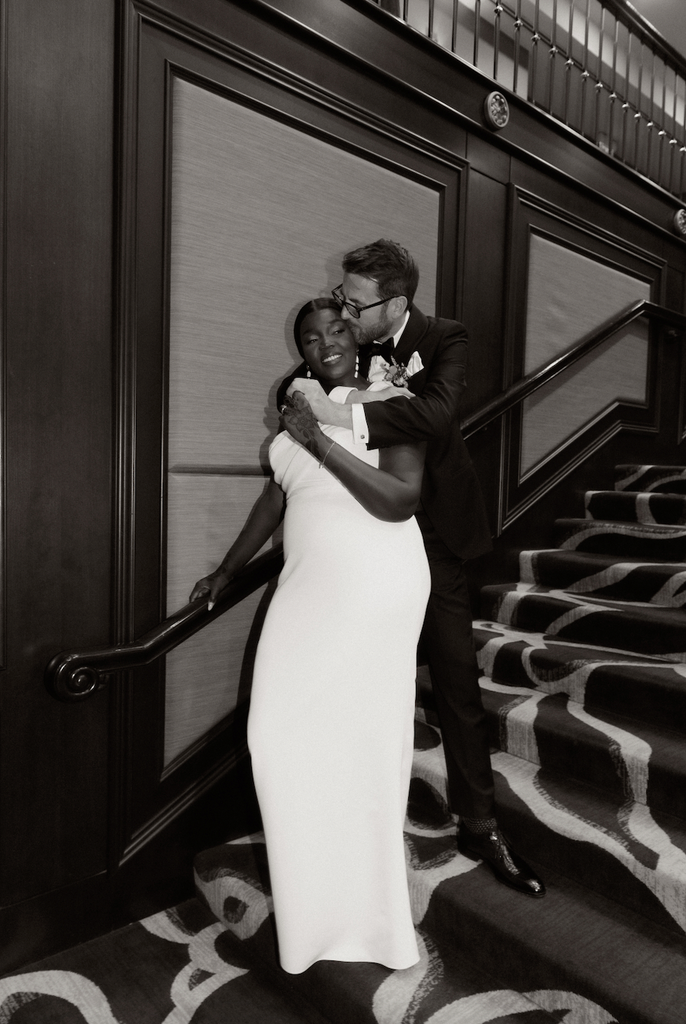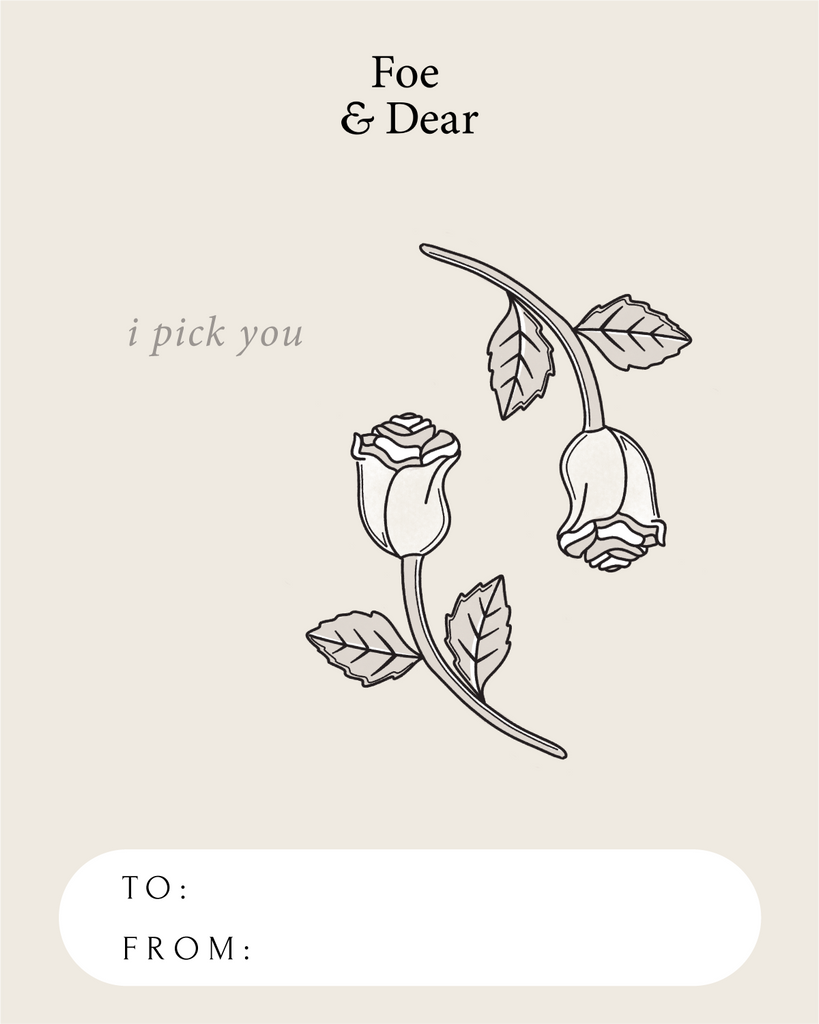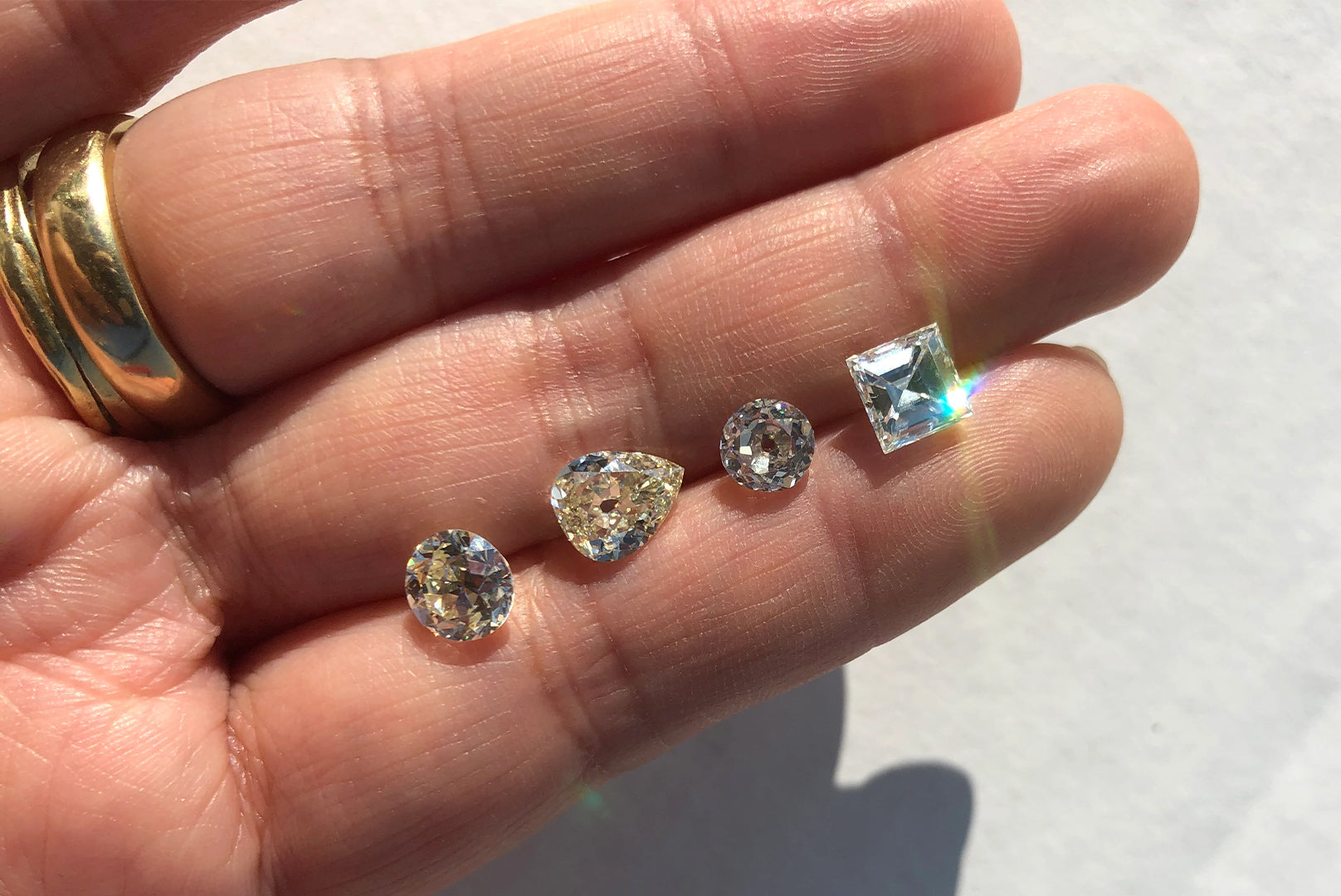
F&D | Guide to Diamond Grading
When you’re new to the world of diamonds it can be daunting to understand all the industry terminology and really know your priorities. Here, we hope to break down some of that jargon and help you understand the key factors you should consider when selecting a diamond.

A key concept to keep in mind is that Diamond Grading typically applies to what the industry refers to as White or Near-Colorless Diamonds, there are separate grading scales that differentiate Champagne, Salt and Pepper and other Gemstones that are outside of these parameters. A general concept to be aware of is that the increased rarity of a diamond's characteristics will result in an increase in their price.
There are four terms to keep in mind: Color, Clarity, Carat Weight, and Cut. These terms are used to categorize diamonds and can be found in the stone's description or listing.
Example Diamond Description:0.90ct / 6.09x6.05x3.89mm / VS2 / E / Round Brilliant
Info Breakdown:
Carat weight / measurements in millimeters / clarity grade / color grade / shape and cut style
Color refers to the diamonds ranking on an alphabetical scale that ranges from colorless to light yellow. Typically the closer it ranks towards being colorless it is traditionally considered more desirable.
Clarity refers to the existence and visual appearance of its internal characteristics, called inclusions, and its surface defects, called blemishes. Diamonds that are graded as Flawless do not have visible inclusions when examined at 10x magnification. When a diamond is graded as Included these diamonds have clarity characteristics that are visible to the unaided eye. The effect of these inclusions and blemishes on the overall clarity grade is based on the size, position, nature and color or relief.
 |

|
Carat Weight is how much the diamond weighs. This is not necessarily the size of the diamond which is measured in millimeters. Diamond weights are stated in metric carats, abbreviated as “ct.” The metric carat is divided into 100 points, one hundredth of a carat is a point. Diamonds are weighed to a thousandth of a carat, and rounded to the nearest point, or hundredth. Typically the larger the carat the higher the price tag, as the stone becomes larger so does the price per carat.
Carat refers to weight while Karat refers to gold and how much pure gold there is in an alloy.

Cut is the overall symmetry of the facets and the proportions of the diamond and their ability to capture and interact with the light. There are three optical effects, brightness, fire and scintillation. Brightness is the white light reflection, fire is the flashes of color and scintillation are the light and dark areas. There must be enough contrast between the light and dark areas to give the pattern a crisp, sharp look. Some popular types of cuts are Brilliant, Rose, Step and Radiant Cut. These all refer to styles and proportions of faceting. All these factors together, the Color grade, Clarity grade, Carat weight and Cut will influence the overall price and rarity of the diamond.
Shape is the overall fashioned shape a diamond is made into. Terms like Oval, Round, Cushion, and Pear refer to the diamond’s shape. Diamonds will have both a term describing their shape and cut like, Round Brilliant or Oval Rosecut.

